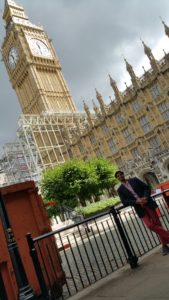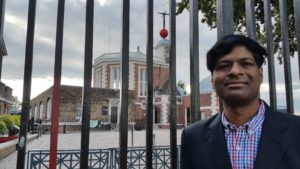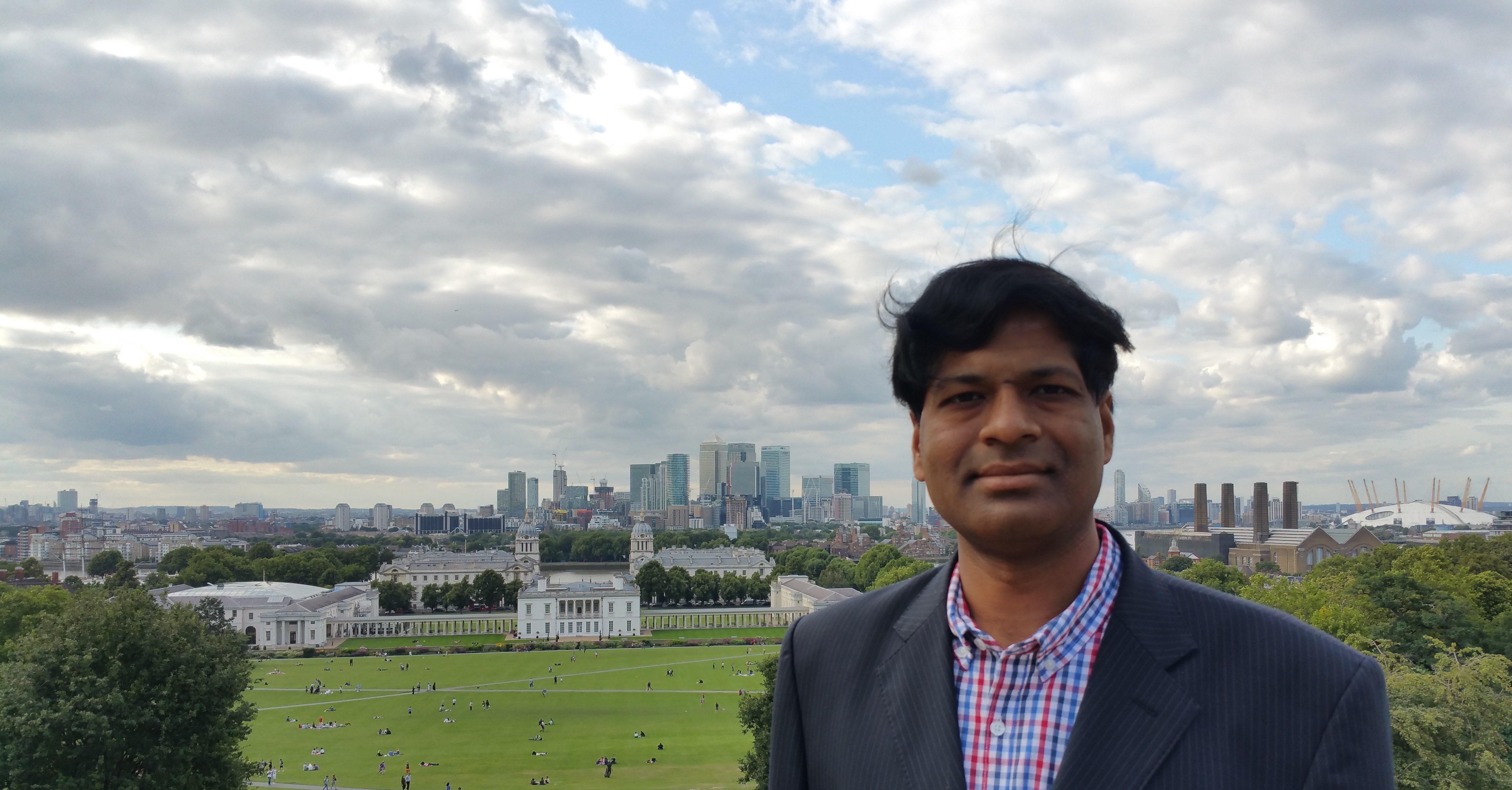
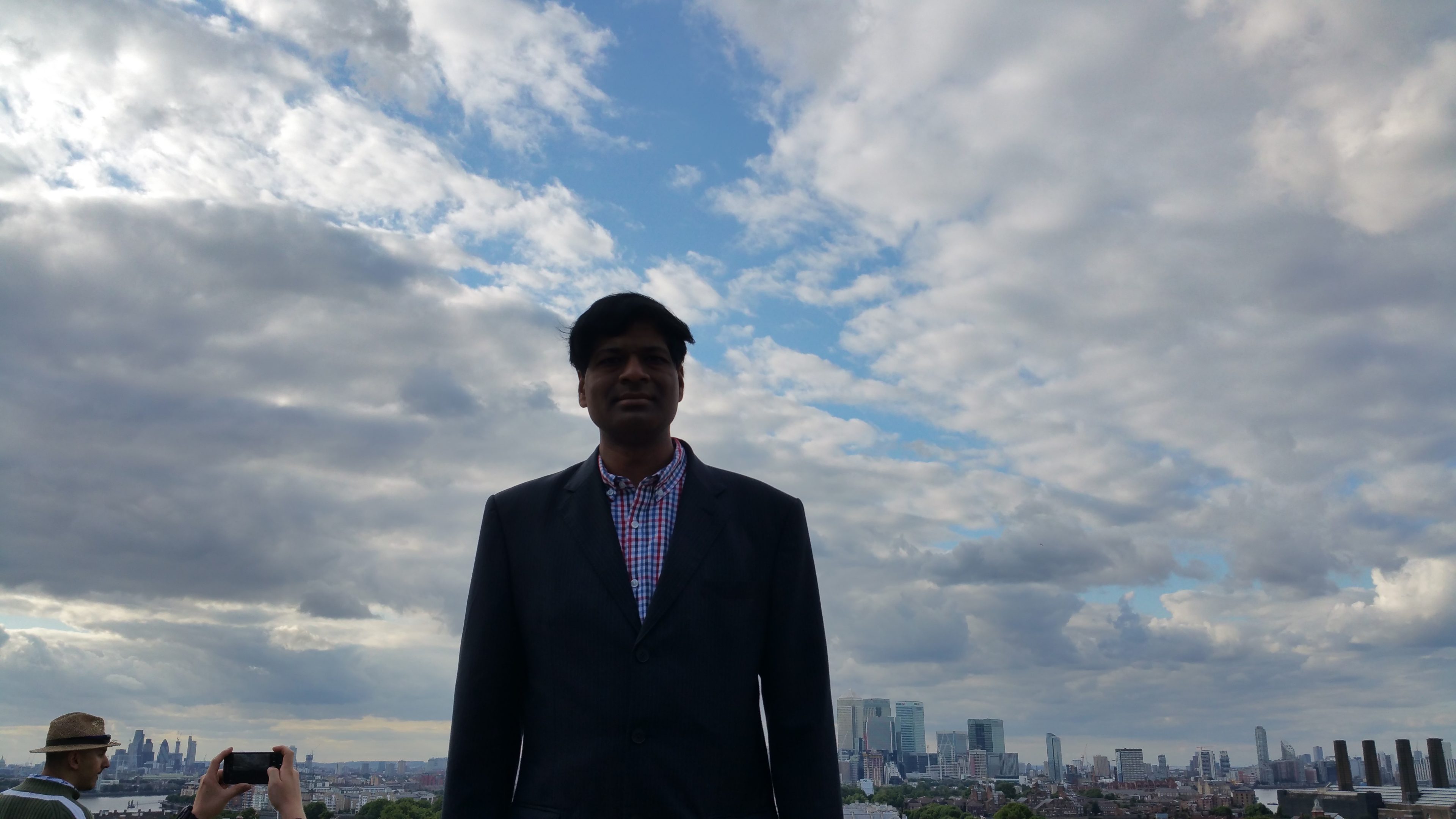
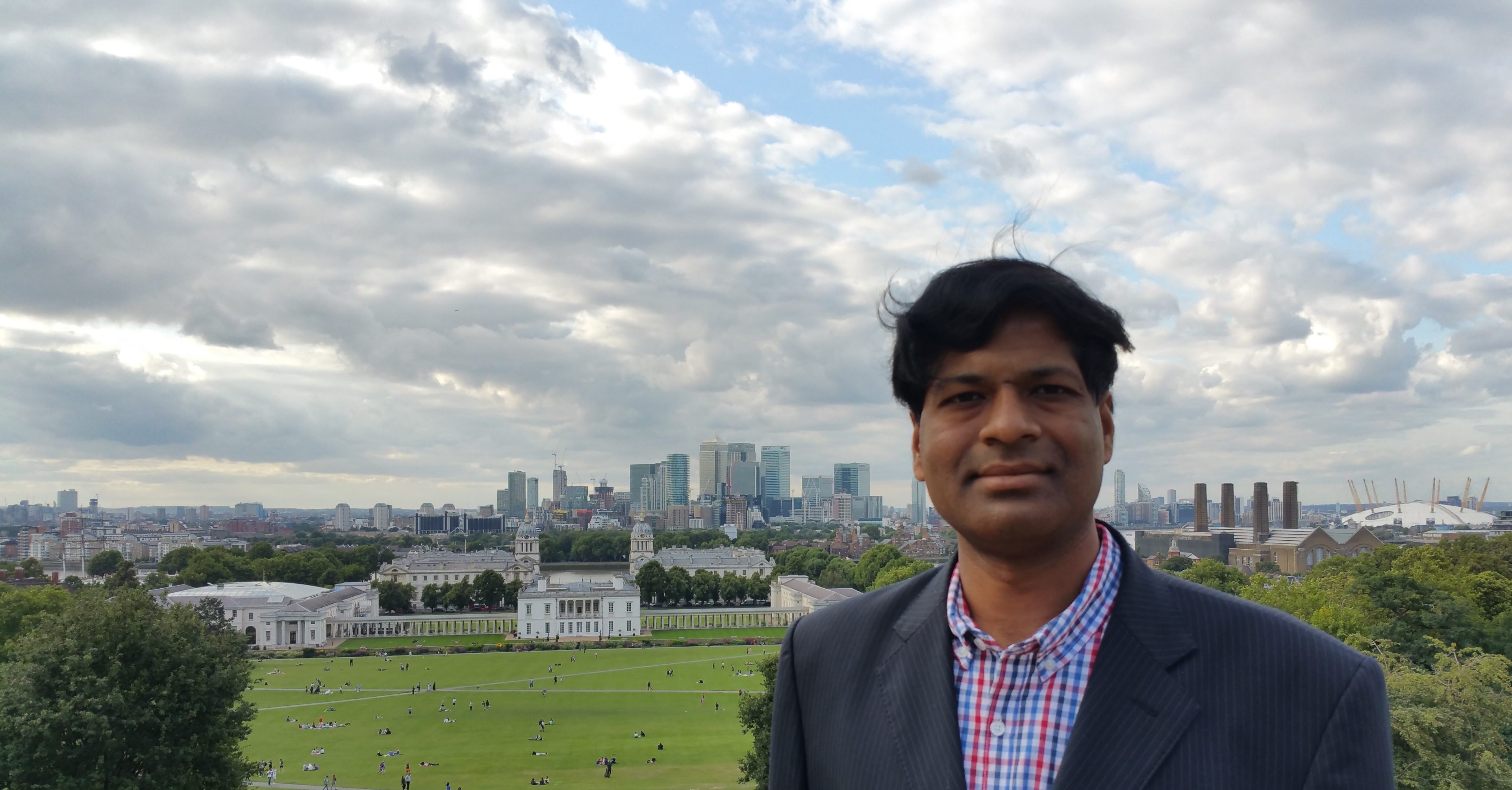
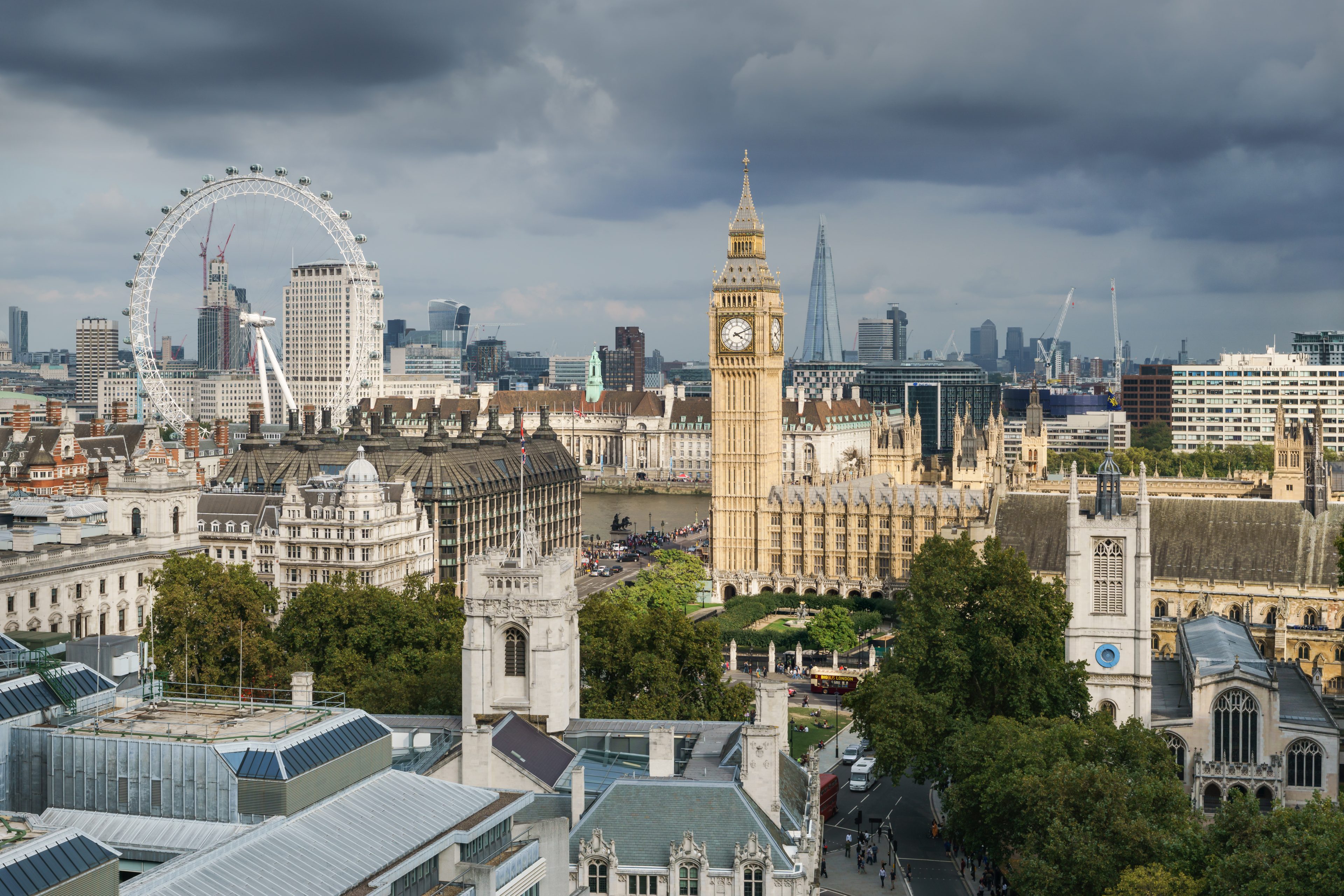
LONDON : GENERAL INFORMATION
- London is the capital and largest city of England and the United Kingdom
- Stands on the River Thames in the south-east of England, at the head of its 50-mile (80 km) estuary leading to the North Sea
- London has been a major settlement for two millennia founded as Londinium was founded by the Romans
- The City of London, London’s ancient core − an area of just 1.12 square miles (2.9 km2) and colloquially known as the Square Mile − retains boundaries that follow closely its medieval limits
- The City of Westminster is also an Inner London borough holding city status. Greater London is governed by the Mayor of London and the London Assembly
- Within London, both the City of London and the City of Westminster have city status and both the City of London and the remainder of Greater London are counties for the purposes of lieutenancies
- The area of Greater London includes areas that are part of the historic counties of Middlesex, Kent, Surrey, Essex and Hertfordshire
- London’s status as the capital of England, and later the United Kingdom, has never been granted or confirmed officially—by statute or in written form
- Its position was formed through constitutional convention, making its status as de facto capital a part of the UK’s uncodified constitution
- The capital of England was moved to London from Winchester as the Palace of Westminster developed in the 12th and 13th centuries to become the permanent location of the royal court and thus the political capital of the nation
- More recently, Greater London has been defined as a region of England and in this context is known as London
LONDON : BRIEF
| Settled by Romans |
|
|---|---|
| Districts |
|
| Government
|
|
| Type |
|
| Body |
|
| London Assembly |
|
| UK Parliament |
|
| European Parliament |
|
| Area
|
|
| Total |
|
| Urban
|
|
| Metro
|
|
| City of London |
|
| Greater London |
|
LONDON : SPECIALITIES
- London is one of the world’s most important global cities
- Has been termed the world’s most powerful, most desirable,most influential, most visited, most expensive, innovative, sustainable, most investment friendly and most popular for work city in the world
- London is one of the largest financial centres and has either the fifth or sixth largest metropolitan area GDP
- Busiest city airport system as measured by passenger traffic
- Leading investment destination, hosting more international retailers and ultra high-net-worth individuals than any other city
- In 2012 – London became the first city to have hosted three modern Summer Olympic Games
- London is one of the most diverse with range of people and cultures, and more than 300 languages are spoken in the region
- The London Underground is the oldest underground railway network in the world
- The historic settlement in Greenwich where the Royal Observatory, Greenwich defines the Prime Meridian, 0° longitude, and Greenwich Mean Time
LONDON : TOPOGRAPHY
 London from Primrose Hill
London from Primrose Hill
- Greater London encompasses a total area of 1583 square kilometres (611 sq mi)
- The extended area known as the London Metropolitan Region or the London Metropolitan Agglomeration, comprises a total area of 8382 square kilometres (3236 sq mi)
- Modern London stands on the Thames, its primary geographical feature, a navigable river which crosses the city from the south-west to the east
- The Thames Valley is a floodplain surrounded by gently rolling hills including Parliament Hill, Addington Hills, and Primrose Hill
- Historically London grew up at the lowest bridging point on the Thames
- The Thames was once a much broader, shallower river with extensive marshlands ; at high tide, its shores reached five times their present width
- Since the Victorian era the Thames has been extensively embanked and many of its London tributaries now flow underground
- The Thames is a tidal river, and London is vulnerable to flooding
- The threat has increased over time because of a slow but continuous rise in high water level by the slow ’tilting’ of the British Isles (up in Scotland and Northern Ireland and down in southern parts of England, Wales and Ireland) caused by post-glacial rebound
- In 1974, a decade of work began on the construction of the Thames Barrier across the Thames at Woolwich to deal with this threat
- While the barrier is expected to function as designed until roughly 2070, concepts for its future enlargement or redesign are already being discussed
LONDON : DISTRICTS & SORROUNDINGS
- London’s vast urban area is often described using a set of district names, such as Bloomsbury, Mayfair, Wembley and Whitechapel
- These are either informal designations, reflect the names of villages that have been absorbed by sprawl, or are superseded administrative units such as parishes or former boroughs
- Such names have remained in use through tradition, each referring to a local area with its own distinctive character, but without official boundaries
- Since 1965 Greater London has been divided into 32 London boroughs in addition to the ancient City of London
- The City of London is the main financial district and Canary Wharf has recently developed into a new financial and commercial hub in the Docklands to the east
- The West End is London’s main entertainment and shopping district, attracting tourists
- West London includes expensive residential areas where properties can sell for tens of millions of pounds
- The average price for properties in Kensington and Chelsea is over £2 million with a similarly high outlay in most of central London
- The East End is the area closest to the original Port of London, known for its high immigrant population, as well as for being one of the poorest areas in London
- The surrounding East London area saw much of London’s early industrial development ; now, brownfield sites throughout the area are being redeveloped as part of the Thames Gateway including the London Riverside and Lower Lea Valley, which was developed into the Olympic Park for the 2012 Olympics and Paralympics
LONDON : RECREATION
Music, Opera & Theatre
- London is one of the major classical and popular music capitals of the world and hosts major music corporations, such as Universal Music Group International and Warner Music Group, as well as countless bands, musicians and industry professionals as also home to many orchestras and concert halls
- London’s two main opera houses are the Royal Opera House and the London Coliseum
- The UK’s largest pipe organ is at the Royal Albert Hall

- London has numerous venues for rock and pop concerts, including the world’s busiest indoor venue, The O2 Arena and Wembley Arena, as well as many mid-sized venues
 Shakespeare’s Globe is a modern reconstruction of the Globe Theatre on the south bank of the River Thames
Shakespeare’s Globe is a modern reconstruction of the Globe Theatre on the south bank of the River Thames
- William Shakespeare spent a large part of his life living and working in London; his contemporary Ben Jonson was also based there, and some of his work, most notably his play The Alchemist, was set in the city
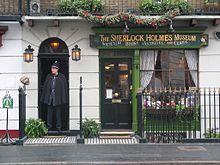 Sherlock Holmes Museum in Baker Street, bearing the number 221B
Sherlock Holmes Museum in Baker Street, bearing the number 221B
 Keats House, where Keats wrote his Ode to a Nightingale. The village of Hampstead has historically been a literary centre in London
Keats House, where Keats wrote his Ode to a Nightingale. The village of Hampstead has historically been a literary centre in London
Leisure & Entertainment
- London is amongst the big four fashion capitals of the world
 Piccadilly Circus
Piccadilly Circus - Europe’s busiest shopping area is Oxford Street, a shopping street nearly 1 mile (1.6 km) long, making it the longest shopping street in the UK
- Oxford Street is home to vast numbers of retailers and department stores, including the world-famous Selfridges flagship store
- Knightsbridge, home to the equally renowned Harrods department store, lies to the south-west
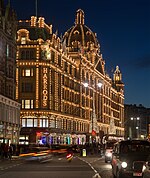 Harrods in Knightsbridge
Harrods in Knightsbridge
- According to official statistics – London is the world’s third busiest film production centre, presents more live comedy than any other city and has the biggest theatre audience of any city in the world
- The city is home to the original Hard Rock Cafe and the Abbey Road Studios, where The Beatles recorded many of their hits
- In the 1960s, 1970s and 1980s, musicians and groups like Elton John, Pink Floyd, Cliff Richard, David Bowie, Queen, The Kinks, The Rolling Stones, The Who, Eric Clapton, Led Zeppelin, The Small Faces, Iron Maiden, Fleetwood Mac, Elvis Costello, Cat Stevens, The Police, The Cure, Madness, The Jam, Ultravox, Spandau Ballet, Culture Club, Dusty Springfield, Phil Collins, Rod Stewart, Adam Ant, Status Quo and Sade, derived their sound from the streets and rhythms of London
A few annual events
- There is a variety of annual events, beginning with the relatively new New Year’s Day Parade, a fireworks display at the London Eye
- The world’s second largest street party – the Notting Hill Carnival, is held on the late August Bank Holiday each year
- Traditional parades include November’s Lord Mayor’s Show, a centuries-old event celebrating the annual appointment of a new Lord Mayor of the City of London with a procession along the streets of the City
- June’s Trooping the Colour, a formal military pageant performed by regiments of the Commonwealth and British armies to celebrate the Queen’s Official Birthday
Parks and open spaces


- A 2013 report by the City of London Corporation said that London is the “greenest city” in Europe with 35,000 acres of public parks, woodlands and gardens
- The largest parks in the central area of London are three of the eight Royal Parks, namely Hyde Park and its neighbour Kensington Gardens in the west, and Regent’s Park to the north
- Hyde Park in particular is popular for sports and sometimes hosts open-air concerts
- Regent’s Park contains London Zoo, the world’s oldest scientific zoo, and is near Madame Tussauds Wax Museum
- Primrose Hill, immediately to the north of Regent’s Park, at 256 feet (78 m) is a popular spot from which to view the city skyline
- Close to Hyde Park are smaller Royal Parks, Green Park and St. James’s Park
- A number of large parks lie outside the city centre, including Hampstead Heath and the remaining Royal Parks of Greenwich Park to the southeast and Bushy Park and Richmond Park (the largest) to the southwest Hampton Court Park is also a royal park, but, because it contains a palace, it is administered by the Historic Royal Palaces, unlike the eight Royal Parks
- Close to Richmond Park is Kew Gardens which has the world’s largest collection of living plants
- In 2003, the gardens were put on the UNESCO list of World Heritage Sites
- There are also parks administered by London’s borough Councils, including Victoria Park in the East End and Battersea Park in the centre
- Some more informal, semi-natural open spaces also exist, including the 320-hectare (790-acre) Hampstead Heath of North London and Epping Forest, which covers 2476 hectares (6118 acres) in the east
- Both are controlled by the City of London Corporation
- Hampstead Heath incorporates Kenwood House, a former stately home and a popular location in the summer months when classical musical concerts are held by the lake, attracting thousands of people every weekend to enjoy the music, scenery and fireworks
- Epping Forest is a popular venue for various outdoor activities, including mountain biking, walking, horse riding, golf, angling, and orienteering
Sport
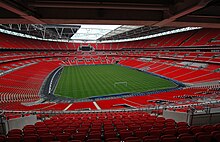
Wembley Stadium, home of the England football team, has a 90,000 capacity. It is the UK’s biggest stadium
- London has hosted the Summer Olympics three times: in 1908, 1948, and 2012 making it the first city to host the modern Games three times
- London’s most popular sport is football and it has five clubs in the English Premier League as of the 2019–20 season

Twickenham, home of the England rugby union team, has an 82,000 capacity, the world’s largest rugby union stadium

Centre Court at Wimbledon. First played in 1877, the Championships is the oldest tennis tournament in the world
- One of London’s best-known annual sports competitions is the Wimbledon Tennis Championships, held at the All England Club in the south-western suburb of Wimbledon
- Played in late June to early July, it is the oldest tennis tournament in the world, and widely considered the most prestigious
- London has two Test cricket grounds, Lord’s (home of Middlesex C.C.C.) in St John’s Wood and the Oval (home of Surrey C.C.C.) in Kennington
- Lord’s has hosted four finals of the Cricket World Cup, and is known as the ´´Home of Cricket´´
- Other key events are the annual mass-participation London Marathon – in which some 35000 runners attempt a 26.2 miles (42.2 km) course around the city and the University Boat Race on the River Thames from Putney to Mortlake
